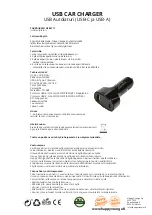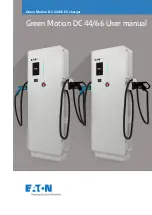
The system will be activated when the TPMS receiver
module detects a change in tire pressure. The ignition
must be in the ON/RUN mode, with the transmission in
PARK in vehicles with an automatic transmission, and
in NEUTRAL with the parking brake engaged in vehicles
with a manual transmission. The hazard lamps will
come on to confirm the vehicle is in Tire Fill Alert mode.
When Tire Fill Alert mode is entered, the tire pressure
screen will be displayed in the instrument cluster. If the
hazard lamps do not come on while inflating or deflat-
ing the tire, the Tire Pressure Monitoring System sensor
may be in an inoperative position, preventing the TPMS
sensor signal from being received. In this case, the
vehicle may need to be moved slightly forward or
backward.
Horn chirps will indicate STFA status as tires are
inflated/deflated. The horn will chirp under the follow-
ing STFA states:
1. The horn will chirp once when the selected pressure
is reached to let you know when to stop inflating or
deflating the tire.
2. The horn will chirp three times if the tire is overin-
flated or over-deflated.
3. The horn will chirp once again when enough air is
added or removed to reach proper selected pres-
sure level.
OCCUPANT RESTRAINT SYSTEMS
Some of the most important safety features in your
vehicle are the restraint systems:
OCCUPANT RESTRAINT SYSTEMS
FEATURES
•
Seat Belt Systems
•
Supplemental Restraint Systems (SRS) Air Bags
•
Child Restraints
Some of the safety features described in this section
may be standard equipment on some models, or may
be optional equipment on others. If you are not sure,
ask an authorized dealer.
IMPORTANT SAFETY PRECAUTIONS
Please pay close attention to the information in this
section. It tells you how to use your restraint system
properly, to keep you and your passengers as safe as
possible.
Here are some simple steps you can take to minimize
the risk of harm from a deploying air bag:
1. Children 12 years old and under should always ride
buckled up in the rear seat of a vehicle with a rear
seat.
2. A child who is not big enough to wear the vehicle
seat belt properly must be secured in the appropri-
ate child restraint or belt-positioning booster seat in
a rear seating position
3. If a child from 2 to 12 years old (not in a rear-facing
child restraint) must ride in the front passenger
seat, move the seat as far back as possible and use
the proper child restraint
4. Never allow children to slide the shoulder belt
behind them or under their arm.
5. You should read the instructions provided with your
child restraint to make sure that you are using it
properly.
6. All occupants should always wear their lap and
shoulder belts properly.
7. The driver and front passenger seats should be
moved back as far as practical to allow the front air
bags room to inflate.
8. Do not lean against the door or window. If your
vehicle has side air bags, and deployment occurs,
the side air bags will inflate forcefully into the space
between occupants and the door and occupants
could be injured.
9. If the air bag system in this vehicle needs to be
modified to accommodate a disabled person, see
page 348 for customer service contact
information.
WARNING!
•
Never place a rear-facing child restraint in front of
an air bag. A deploying passenger front air bag can
cause death or serious injury to a child 12 years or
younger, including a child in a rear-facing child
restraint.
•
Never install a rear-facing child restraint in the
front seat of a vehicle. Only use a rear-facing child
restraint in the rear seat. If the vehicle does not
have a rear seat, do not transport a rear-facing
child restraint in that vehicle.
SAFETY
239
6
5538906_24_JL_OM_EN_USC_t_E1.pdf 239
5/22/2023 9:02:27 AM
















































